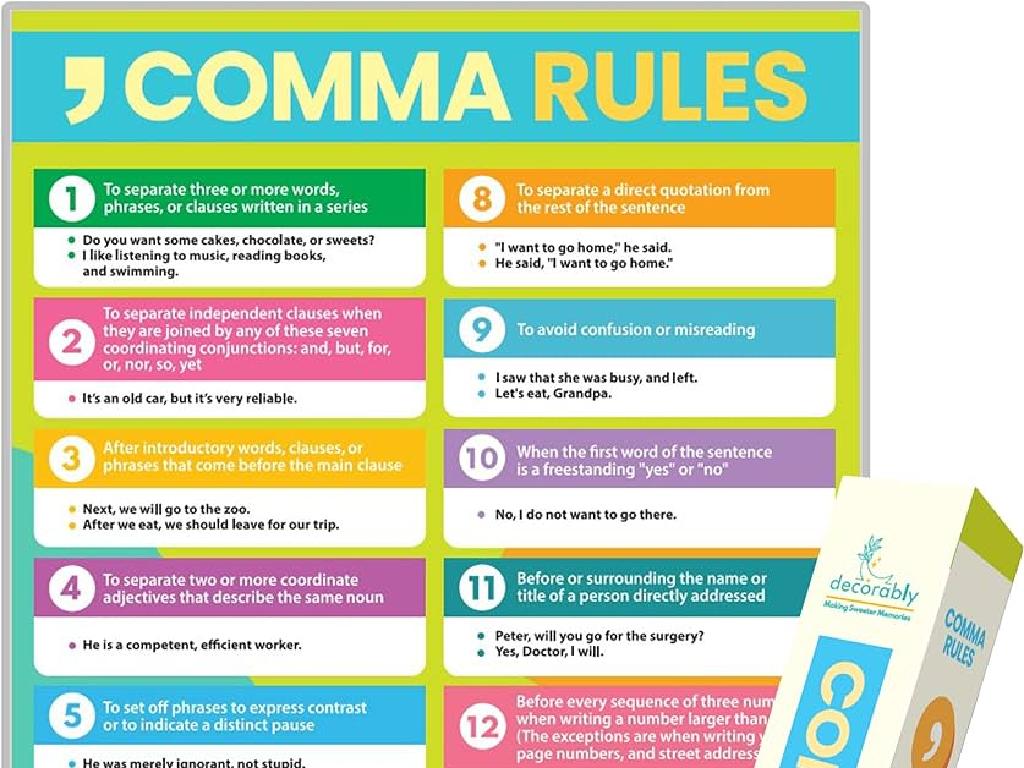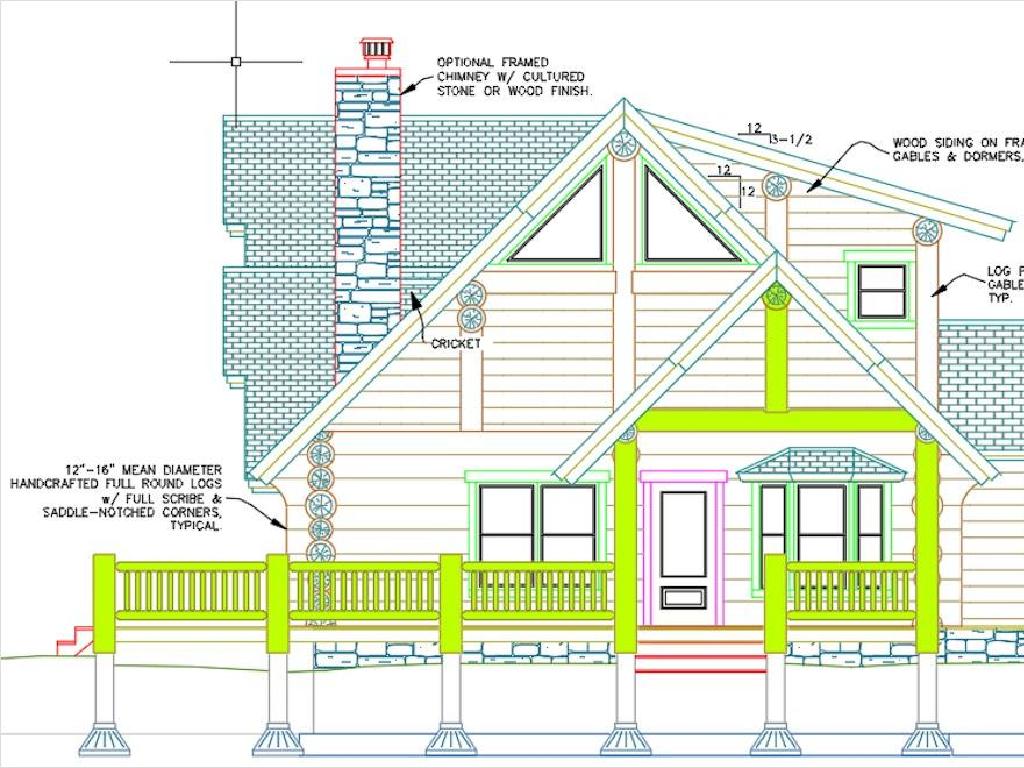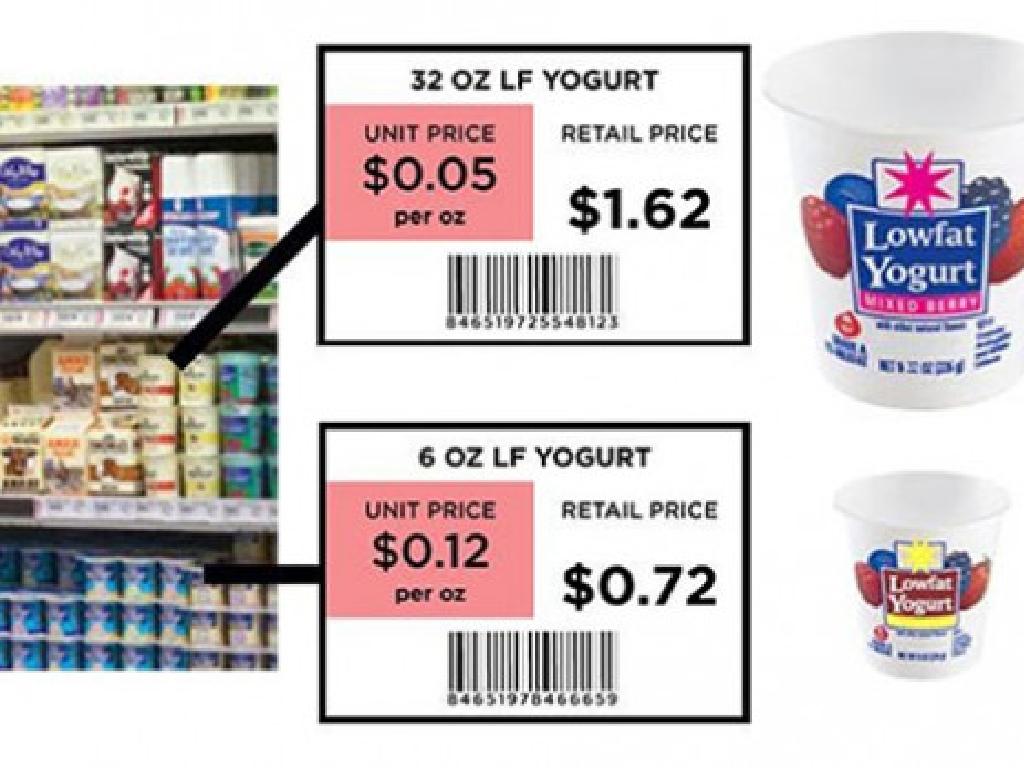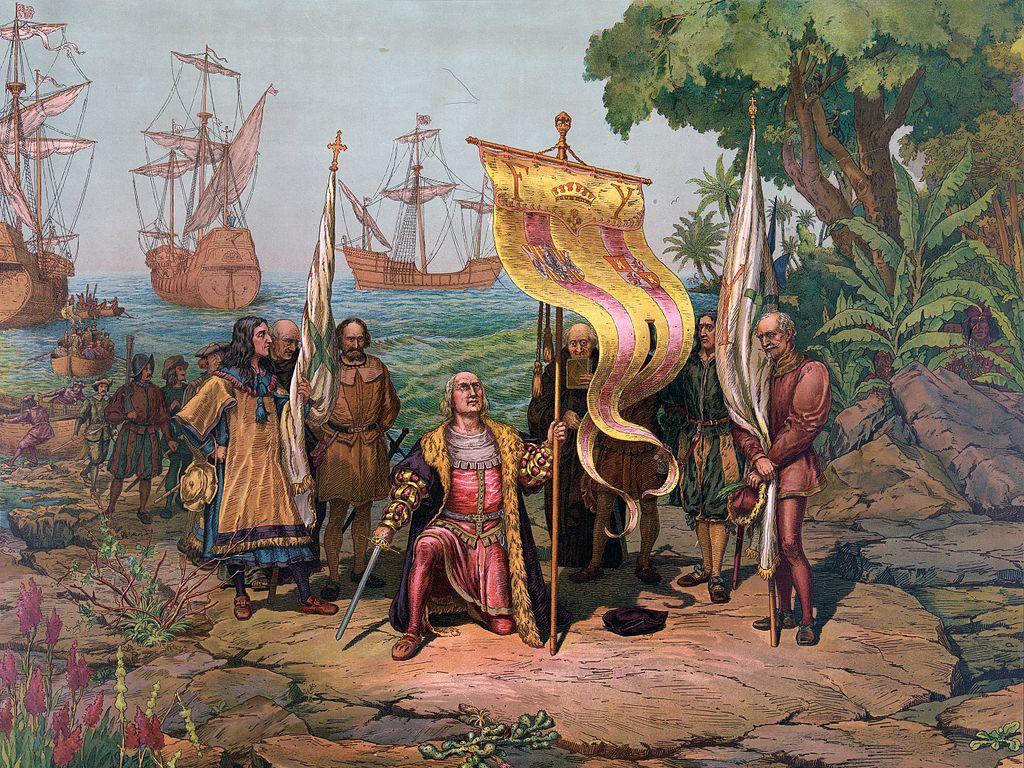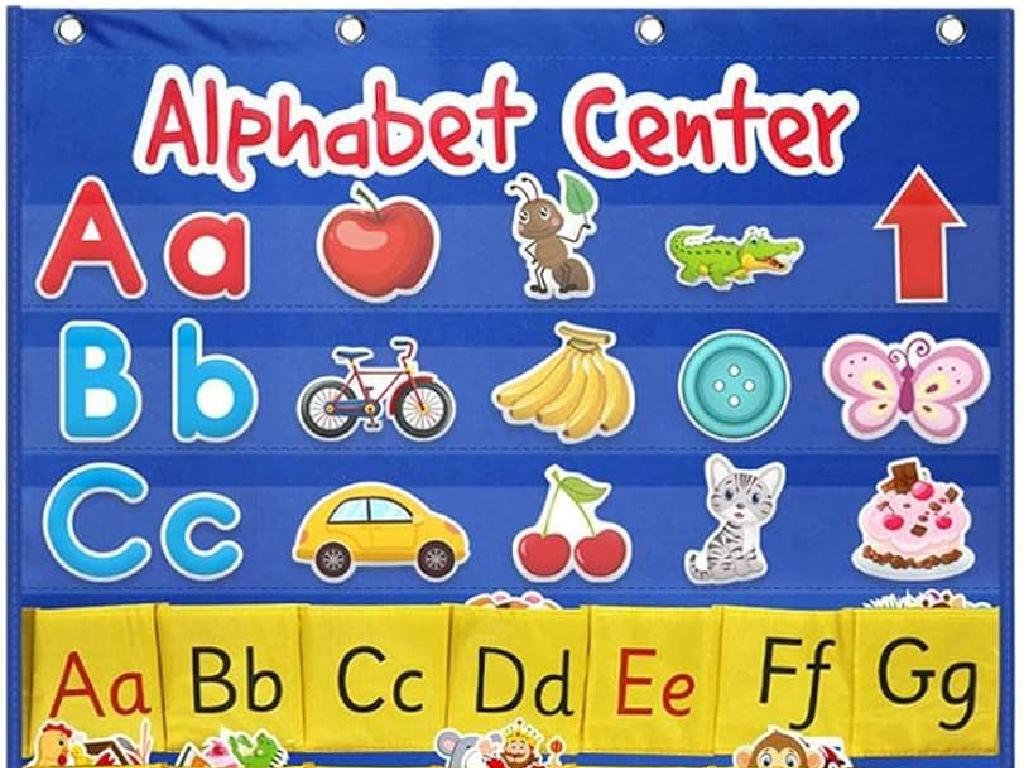Frequently Confused Letters: Find The Letter
Subject: Language arts
Grade: Pre-k
Topic: Letter Identification
Please LOG IN to download the presentation. Access is available to registered users only.
View More Content
Welcome to Letter Land!
– Play ‘Find the Letter’ game
– Learn about similar-looking letters
– Letters like ‘b’ and ‘d’ can be tricky; they are like letter twins!
– Become a Letter Detective
– Spot the differences with fun
– We’ll use games to see how ‘p’ and ‘q’ are not the same.
|
This slide introduces the ‘Find the Letter’ game to help Pre-k students distinguish between commonly confused letters. The objective is to make learning fun and interactive by turning the students into ‘Letter Detectives.’ As they play, they will focus on identifying differences between similar-looking letters such as ‘b’ and ‘d’ or ‘p’ and ‘q.’ Use visual aids and physical activities to reinforce the differences. For example, have letter cards for students to sort, or play a matching game where they find the odd letter out. Encourage them to ‘investigate’ the shapes and sounds of each letter, promoting both recognition and phonetic understanding.
Meet the Letters: Spot the Difference!
– Some letters look similar
– Focus on ‘b’, ‘d’, ‘p’, ‘q’
– ‘b’ has a big belly, ‘d’ has a big back
– Learn tricks to differentiate
– ‘p’ is a plunging plane, ‘q’ is a queen with a tail
– Practice makes perfect
|
This slide introduces the concept of frequently confused letters to Pre-K students. It’s important to use visual and auditory cues to help them differentiate between the letters ‘b’, ‘d’, ‘p’, and ‘q’. For example, ‘b’ can be remembered as having a ‘big belly’ in front, while ‘d’ has its round part or ‘big back’ at the back. Similarly, ‘p’ can be visualized as a ‘plunging plane’ going down, and ‘q’ as a ‘queen’ with a stylish tail. Encourage the students to draw these letters in the air with their fingers and to come up with their own tricks to remember the differences. Practice through repetition and engaging activities like letter hunts or matching games will reinforce their learning.
Learning Letters: ‘b’ and ‘d’
– ‘b’: belly, bat, ball
– Picture ‘b’ with a round belly and a bat before the ball.
– ‘d’: back first, then drum
– Imagine ‘d’ with its back before hitting a drum.
– Hand practice for ‘b’ and ‘d’
– Use hands to form ‘b’ and ‘d’ to remember their shapes.
|
This slide is designed to help Pre-k students differentiate between the frequently confused letters ‘b’ and ‘d’. Use visual imagery to help them remember the shape of each letter: ‘b’ has a big belly, like when you’re holding a bat and about to hit a ball, while ‘d’ has its back first, as if you’re going to hit a drum. Encourage the children to practice making these letters with their hands, which will help with their motor skills and also reinforce the visual difference between the two letters. During the class, have the students practice writing these letters and use hand movements to distinguish between them. This kinesthetic approach will aid in memorization and recognition.
Letter Buddies: ‘p’ and ‘q’
– ‘p’ is a pirate with a patch
– Imagine ‘p’ with a patch over its eye and a peg leg.
– ‘q’ is a queen with a crown
– Think of ‘q’ wearing a crown that comes before its tail.
– Draw ‘p’ and ‘q’ with your finger
– Practice makes perfect
– Keep practicing to tell ‘p’ and ‘q’ apart easily.
|
This slide is designed to help Pre-k students differentiate between the frequently confused letters ‘p’ and ‘q’ through visualization and kinesthetic learning. By associating the letters with characters, children can more easily remember their shapes. The pirate imagery for ‘p’ and the queen imagery for ‘q’ provide a fun and engaging way to learn. Encourage the students to draw the letters in the air with their fingers, which helps with muscle memory. During the class, have the students practice these motions and create their own ‘p’ and ‘q’ characters on paper. Offer plenty of praise for effort and correct identification to build confidence.
Let’s Play: Find the Letter!
– Play ‘Find the Letter’ game
– Spot ‘b’, ‘d’, ‘p’, ‘q’ on the board
– These letters can look similar, but they’re not the same!
– Point them out quickly
– Who’s the quickest letter detective?
|
This interactive game is designed to help Pre-k students distinguish between commonly confused letters such as ‘b’, ‘d’, ‘p’, and ‘q’. Set up a game board with these letters scattered around, and encourage the children to point to them as they identify each one. This activity helps with letter recognition and reinforces the differences between visually similar letters. Make sure to praise the students for their efforts to boost their confidence. You can have multiple rounds to give each child a chance to be the ‘fastest detective’. This will also help in developing their motor skills and letter identification speed.
Letter Craft Time with Playdough
– Make letters using playdough
– Focus on ‘b’, ‘d’, ‘p’, ‘q’
– These letters often get mixed up, so shape them carefully
– Share your letters with friends
– Have fun while learning
– Learning through play helps remember better
|
This slide introduces a hands-on activity for Pre-k students to help them distinguish between commonly confused letters. By manipulating playdough to form the letters ‘b’, ‘d’, ‘p’, and ‘q’, students will engage their fine motor skills and visual discrimination to better remember each letter’s shape. Encourage them to take their time rolling and shaping the playdough, and to observe the differences between the letters as they create them. After crafting the letters, students should show their creations to their peers, which will reinforce their learning and provide an opportunity for social interaction. As a teacher, you can circulate the room to offer guidance and ensure each child is correctly forming the letters. Possible variations of the activity could include using different colors for each letter, creating letter stamps with the playdough, or even turning the activity into a game where students guess which letter their peers made.
Story Time with Letters: Benny the Bear
– Meet Benny the Bear
– ‘b’ and ‘d’ confusion
– These letters look similar but sound different
– Benny’s learning adventure
– Benny used shapes and sounds to tell them apart
– Help Benny distinguish ‘b’ and ‘d’
– We’ll use fun activities to learn with Benny
|
This slide introduces a story about Benny the Bear to help Pre-k students differentiate between the commonly confused letters ‘b’ and ‘d’. The story will engage the children and provide a relatable scenario for understanding the concept. Emphasize the visual and auditory differences between the two letters. Activities can include tracing the letters with fingers, using body movements to mimic the letter shapes, and associating each letter with a distinct word (e.g., ‘b’ for ball and ‘d’ for dog). Encourage the children to participate in the story by asking questions and predicting what Benny will do next to learn the difference between the letters.
Class Activity: Letter Hunt Adventure
– Explore the classroom on a Letter Hunt
– Find objects starting with ‘b’, ‘d’, ‘p’, ‘q’
– Look for ‘ball’, ‘dog’, ‘pen’, ‘quilt’
– Team up with a classmate
– Make a list of your letter discoveries
– Write or draw the objects you find
|
This interactive activity is designed to help Pre-k students distinguish between commonly confused letters by associating them with familiar objects in their environment. Teachers should facilitate the activity by guiding the students around the classroom and helping them identify objects that start with the letters ‘b’, ‘d’, ‘p’, and ‘q’. Encourage teamwork by pairing students and providing them with paper to create their list. Possible variations of the activity could include using stickers to mark found items, drawing the objects instead of writing, or even extending the hunt to the school library or playground for a broader range of objects. The goal is to reinforce letter recognition in a fun and engaging way.
Congratulations, Detectives!
– Great job finding letters
– Recall tricks to differentiate
– ‘b’ has a belly, ‘d’ has a diaper
– Time for a round of applause
– You’re super letter detectives!
|
This slide is a celebration of the students’ achievements in identifying frequently confused letters. It’s important to reinforce the recognition strategies they’ve learned, such as visual cues to distinguish between similar letters. For example, ‘b’ and ‘d’ can be remembered by associating ‘b’ with a belly in front and ‘d’ with a diaper on the back. Encourage the children to applaud their efforts and each other, fostering a positive learning environment. This will help them feel proud of their progress and more confident in their ability to identify letters correctly. As a follow-up, you can have students draw their favorite letters with faces showing ‘b’s belly and ‘d’s diaper to reinforce the concept.

